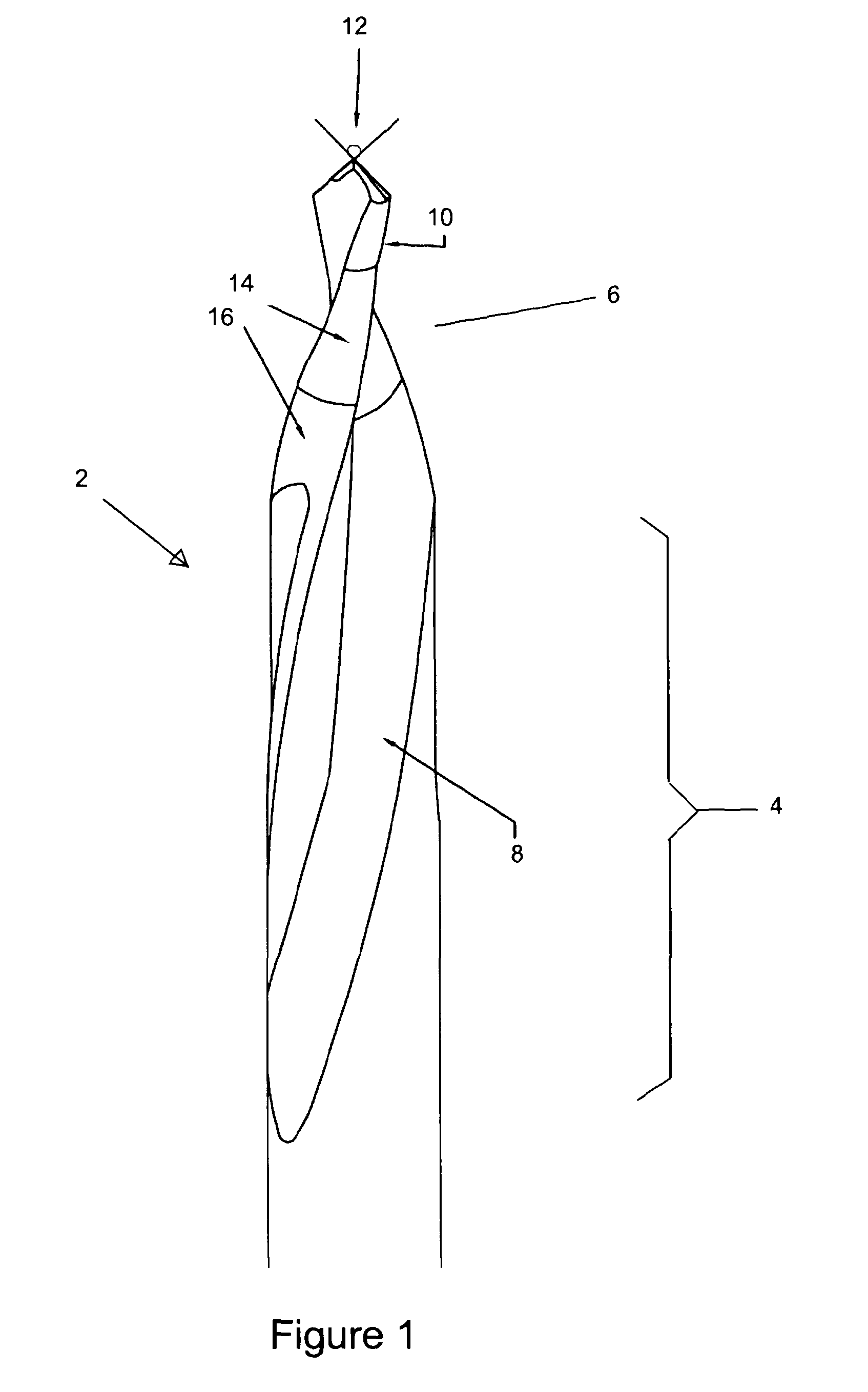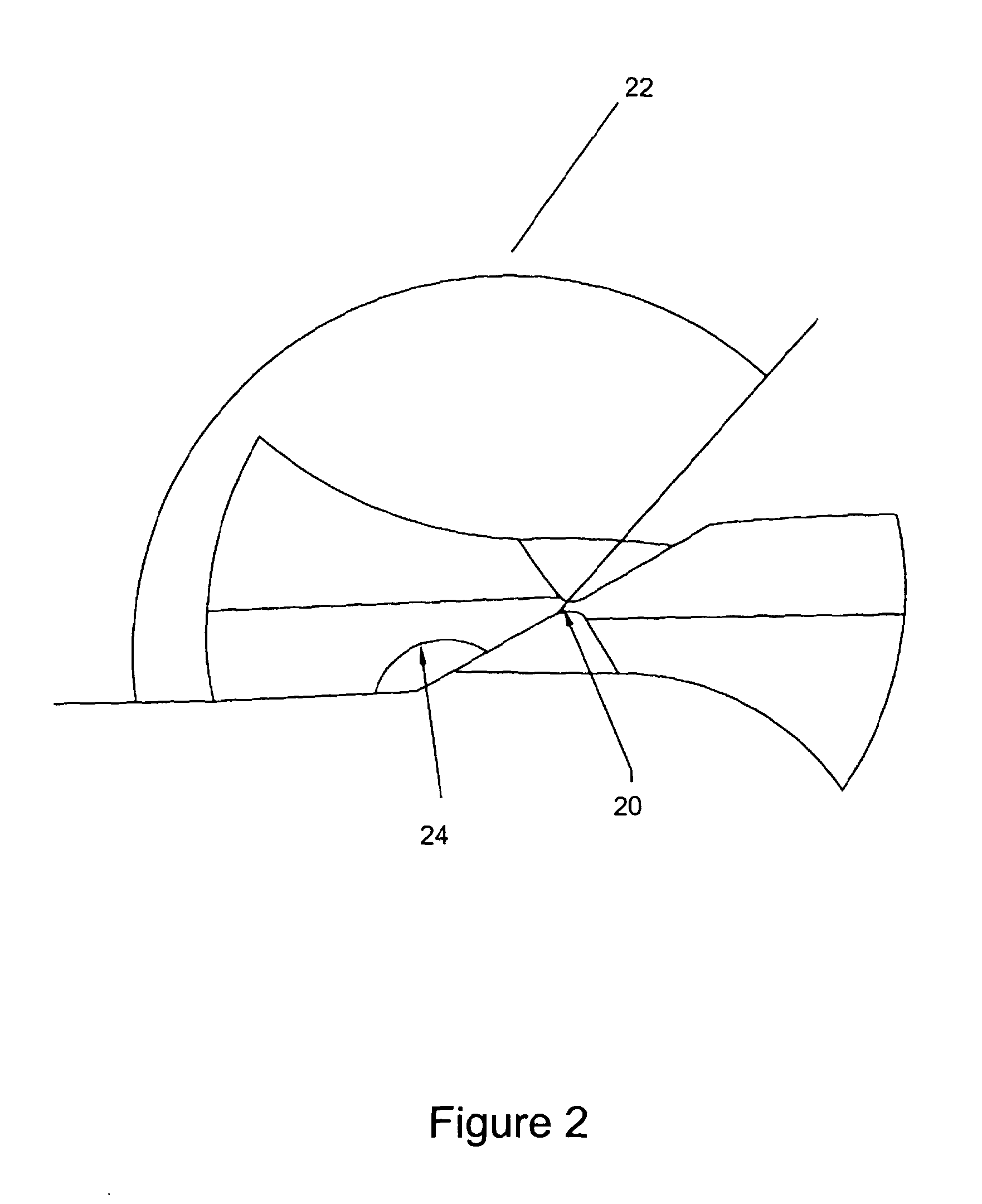Twist drill for advanced materials
a technology of advanced materials and drill bits, which is applied in the direction of drill bits, manufacturing tools, wood boring tools, etc., can solve the problems of difficult control of the drilling process, increased risk of hand drilling, and difficulty in producing uniform holes, so as to improve the quality of the hole. , the effect of good hole quality
- Summary
- Abstract
- Description
- Claims
- Application Information
AI Technical Summary
Benefits of technology
Problems solved by technology
Method used
Image
Examples
Embodiment Construction
[0284]FIG. 1 shows a twist drill 2 of the present invention. The drill comprises a shank (not shown), drill body 4 and drill tip 6. Two helical flutes 8 extend from the drill tip to the drill body. The helix angle is comparatively large at the start of the helix, being 50° and comparatively small at the end of the helix, being 10°. Other angles are possible, for example 25° to 60°, suitably 40° to 60°, for the start angle, and 0° to 35° for the finish angle.
[0285]The helix is formed using a spline function. The spline function is selected so that the change in helix angle as a function of the axial distance from the start of the helix at the drill tip is smooth and continuous. This is in contrast to conventional variable helix drills wherein the change in helix angle is stepped, such that there are transitions or steps between helix angles. In contrast, this embodiment, with its smooth and continuous variation in helix angle does not have any such steps. This has the significant adv...
PUM
| Property | Measurement | Unit |
|---|---|---|
| relief angle | aaaaa | aaaaa |
| relief angle | aaaaa | aaaaa |
| helix angle | aaaaa | aaaaa |
Abstract
Description
Claims
Application Information
 Login to View More
Login to View More - R&D
- Intellectual Property
- Life Sciences
- Materials
- Tech Scout
- Unparalleled Data Quality
- Higher Quality Content
- 60% Fewer Hallucinations
Browse by: Latest US Patents, China's latest patents, Technical Efficacy Thesaurus, Application Domain, Technology Topic, Popular Technical Reports.
© 2025 PatSnap. All rights reserved.Legal|Privacy policy|Modern Slavery Act Transparency Statement|Sitemap|About US| Contact US: help@patsnap.com



